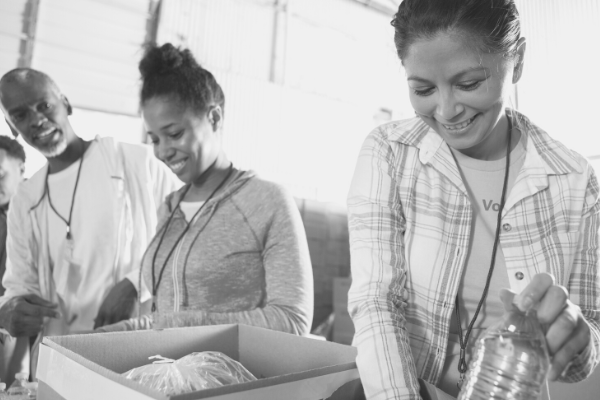SERVING FAMILIES IS OUR ASSIGNMENT
Sex Trafficking
Our purpose at Trufam City is to bring awareness to the community of human trafficking.
Under U.S. federal law, "severe forms of trafficking in persons" includes both sex trafficking and labor trafficking:
Sex Trafficking is the recruitment, harboring, transportation, provision, obtaining, patronizing, or soliciting of a person for the purposes of a commercial sex act, in which the commercial sex act is induced by force, fraud, or coercion, or in which the person induced to perform such an act has not attained 18 years of age (22 USC § 7102).
Labor Trafficking is the recruitment, harboring, transportation, provision, or obtaining of a person for labor or services, through the use of force, fraud, or coercion for the purposes of subjection to involuntary servitude, peonage, debt bondage, or slavery, (22 USC § 7102).
If you are in the United States and believe someone may be a victim of human trafficking, call the 24-hour National Human Trafficking Hotline at 1-888-373-7888 or report an emergency to law enforcement by calling 911. Trafficking victims, whether or not U.S. citizens, are eligible for services and immigration assistance.
Sex trafficking is a form of modern-day slavery in which individuals perform commercial sex through the use of force, fraud, or coercion. Minors under the age of 18 engaging in commercial sex are considered to be victims of human trafficking, regardless of the use of force, fraud, or coercion.
Sex traffickers frequently target victims and then use violence, threats, lies, false promises, debt bondage, or other forms of control and manipulation to keep victims involved in the sex industry for their own profit.
Sex trafficking exists within diverse and unique sets of venues and businesses including fake massage businesses, escort services, residential brothels, in public on city streets and in truck stops, strip clubs, hostess clubs, hotels and motels, and elsewhere.
Demand For Sex Trafficking: What You Need To Know
Sex trafficking is a market-driven criminal industry that is based on the principles of supply and demand. Therefore, people who purchase commercial sex increase the demand for commercial sex and likewise provide a profit incentive for traffickers, who seek to maximize profits by exploiting trafficking victims. Therefore, buyers of commercial sex need to recognize their involvement in driving demand. By not buying sex and not participating in the commercial sex industry, community members can reduce the demand for sex trafficking.
What are the risks and consequences?
This type of violence exploits women, men, and children across the United States and around the world. Trafficking victimization and perpetration share risks and consequences associated with child abuse and neglect, intimate partner violence, sexual violence, and youth violence.
Perpetrators of human trafficking often target people who are poor, vulnerable, living in an unsafe situation, or searching for a better life. Victims can come from all backgrounds and become trapped in different locations and situations.
- Many victims are women and girls, though men and boys are also impacted
- Victims include all races, ethnicities, sexual orientations, gender identities, citizens, non-citizens, and income levels
- Victims are trapped and controlled through assault, threats, false promises, perceived sense of protection, isolation, shaming, and debt
- Victims do not have to be physically transported between locations to be victimized
The consequences of sex trafficking are similar to the consequences of sexual violence. Consequences can be immediate and long-term including physical and relationship problems, psychological concerns, and negative chronic health outcomes.
How can we prevent sex trafficking?
Sex trafficking is preventable. Efforts have focused on increasing community awareness of human trafficking and addressing exploitation after it occurs. To learn more about how to recognize the signs of human trafficking, visit the National Human Trafficking Hotline’s. More research is needed to evaluate programs and policies that help reduce factors that put people at risk in order to help prevent trafficking before it occurs. Strategies based on the best available evidence exist to prevent related forms of violence, and they may also reduce sex trafficking. States and communities can implement and evaluate efforts that:
- Encourage healthy behaviors in relationships
- Foster safe homes and neighborhoods
- Identify and address vulnerabilities during health care visits
- Reduce demand for commercial sex
- End business profits from trafficking-related transactions
Human Trafficking
Everyone has the potential to discover a human trafficking situation. While the victims may sometimes be kept behind locked doors, they are often hidden right in front of us at, for example, construction sites, restaurants, elder care centers, nail salons, agricultural fields, and hotels. Traffickers’ use of coercion – such as threats of deportation and harm to the victim or their family members – is so powerful that even if you reach out to victims, they may be too fearful to accept your help. Knowing indicators of human trafficking and some follow up questions will help you act on your gut feeling that something is wrong and report it.
Human Trafficking Indicators:
- While not an exhaustive list, these are some key red flags that could alert you to a potential trafficking situation that should be reported:
- Living with employer
- Poor living conditions
- Multiple people in cramped space
- Inability to speak to individual alone
- Answers appear to be scripted and rehearsed
- Employer is holding identity documents
- Signs of physical abuse
- Submissive or fearful
- Unpaid or paid very little
- Under 18 and in prostitution
Questions to Ask
Assuming you have the opportunity to speak with a potential victim privately and without jeopardizing the victim’s safety because the trafficker is watching, here are some sample questions to ask to follow up on the red flags you became alert to:
- Can you leave your job if you want to?
- Can you come and go as you please?
- Have you been hurt or threatened if you tried to leave?
- Has your family been threatened?
- Do you live with your employer?
- Where do you sleep and eat?
- Are you in debt to your employer?
- Do you have your passport/identification? Who has it?
Where to Get Help
If you believe you have identified someone still in the trafficking situation, alert law enforcement immediately at the numbers provided below. It may be unsafe to attempt to rescue a trafficking victim. You have no way of knowing how the trafficker may react and retaliate against the victim and you. If, however, you identify a victim who has escaped the trafficking situation, there are a number of organizations to whom the victim could be referred for help with shelter, medical care, legal assistance, and other critical services. In this case, call the National
Human Trafficking Hotline described below.
911 Emergency
For urgent situations, notify local law enforcement immediately by calling 911. You may also want to alert the National Human Trafficking Hotline described below so that they can ensure response by law enforcement officials knowledgeable about human trafficking.
1-888-373-7888 National Human Trafficking Hotline
Call the National Human Trafficking Hotline, a national 24-hour, toll-free, multilingual anti-trafficking hotline. Call 1-888-373-7888 to report a tip; connect with anti-trafficking services in your area; or request training and technical assistance, general information, or specific anti-trafficking resources. The Hotline is equipped to handle calls from all regions of the United States from a wide range of callers including, but not limited to: potential trafficking victims, community members, law enforcement, medical professionals, legal professionals, service providers, researchers, students, and policymakers.
Family Services
TRUFamily services provide resources for families that may need extra support. Whether you are looking for adult education classes, child care and child development programs, supervised visitation, monitored exchange, assistance with securing benefits and government services, financial education and coaching, or parenting skills classes, we are here to help you and your family access the support you need.
I am enough (women)
Our mission is to Connect, Educate, and Empower Women that will not only inspire the next generation of leaders, but provide a community for those currently leading. We will discuss opportunities and issues we handle every day as well as learn skills to strengthen our voice as Women in this world!
During this event you’ll be able to get in alignment with yourself, your passion and your purpose, plus you’ll get to meet other women that are on your same journey. You’ll have time to network and meet other women similar to your journey.
Young men mentoring
The weight room focuses on building essential skills needed to become productive, contributing citizens. We are committed to mentoring and supporting individuals as they pursue goals throughout their lifetime. Our members are actively mentoring elementary, middle school and high school youth. Workshops for children and youth include topics such as positive self-identity and personal vision, life skills, social and emotional skills, moral character, work ethic and lifelong learning.
Family services
Sometimes, families need extra support when it comes to creating a home, managing finances, and raising their children. TRUFamily offers warm, caring assistance to foster health and well-being in the home and in communities through Community and Family Services programs.
MADINAM Scholarships program for college students
- Undergraduate and Graduate Scholarships
- All students pursuing an undergraduate or graduate degree must:
- Be a Maryland resident
- Have a GPA of 2.8 or higher to be competitive?
- Plan to attend an accredited college, university, or community college, in the upcoming academic year
- Be a U.S. citizen or permanent resident
- Have a family income of $90,000 or less
Career Training Scholarships
- All students pursuing career training programs must:
- Be a Maryland resident
- Have a high school diploma or a GED
- Be planning to attend a non-degree certificate program at a community college or private career school
- Have a family income of $66,000 or less

Food Pantry
TRUFAM City provides food for families in the surrounding communities.
Everyone Sunday morning at 10:30 am – 12:00 Noon, families come from all over to receive food as we have partnered with Trader Joe's.
Food is provided at 7165 Old Alexandria Ferry rd, Clinton, Maryland 20735



